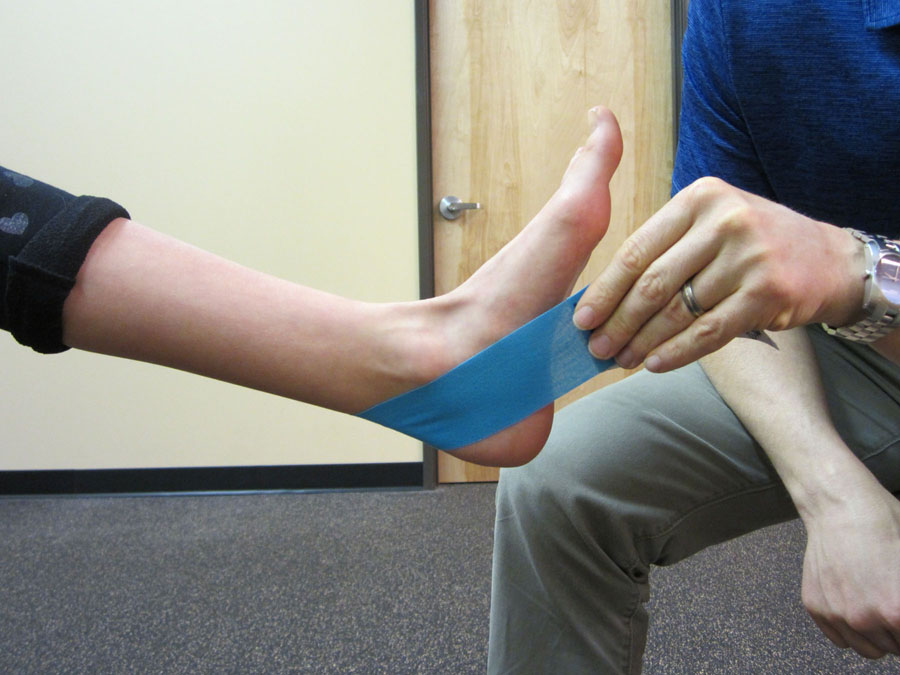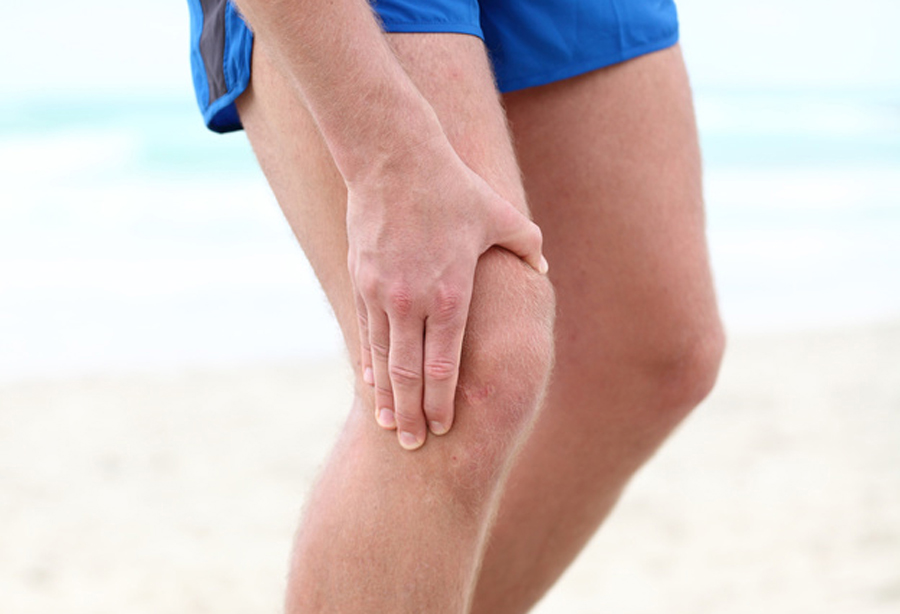Pain along the inside (medial) portion of your ankle is often due to Posterior Tibialis Tendon Dysfunction (PTTD), also known as posterior tibial tendon syndrome or tibialis posterior syndrome, and it can be very difficult to treat.
The posterior tibialis muscle is a particularly important muscle in runners as it is used in plantar flexing the ankle (pointing the ankle/toes downward) and inverting the ankle (rolling it inward). More importantly, its role is to support the arch of the foot. Injury to this muscle is common in runners as well as those who play sports involving high foot impact such as basketball. It can be associated with a fall or can generally develop overtime depending on your risk factors and the strain your foot has taken. (Please refer to 9 Tips to Self-Treat Posterior Tibialis Pain.)

In this video, I demonstrate a taping technique for supporting the arch and the bottom of the foot for those suffering from PTTD. (I recommend using KT TAPE.)
PTTD most commonly starts out as an over use injury. Although more common in runners and those who are involved in high impact sports, this condition can affect anyone. If the condition is left untreated, the end result is usually a falling of the arch which causes adult acquired flatfoot. When this condition is caught early, it can be self-treated. Once the arch has fallen, surgery would most likely be indicated.
If you’re interested in more thorough guide along with other videos on how to self-treat lower extremity injuries and pain like PTTD, check out the Resilient Runner Program. This is the perfect guide to help you take control of your health and fitness as well as self-manage common aches, pains, and injuries. Even if you’re not a runner, this program is appropriate for those who love to stay active and want to enjoy a healthy lifestyle.
In case you haven’t already, be sure to subscribe to my e-mail list and YouTube channel as well as join our community on Facebook by following The Physical Therapy Advisor!








